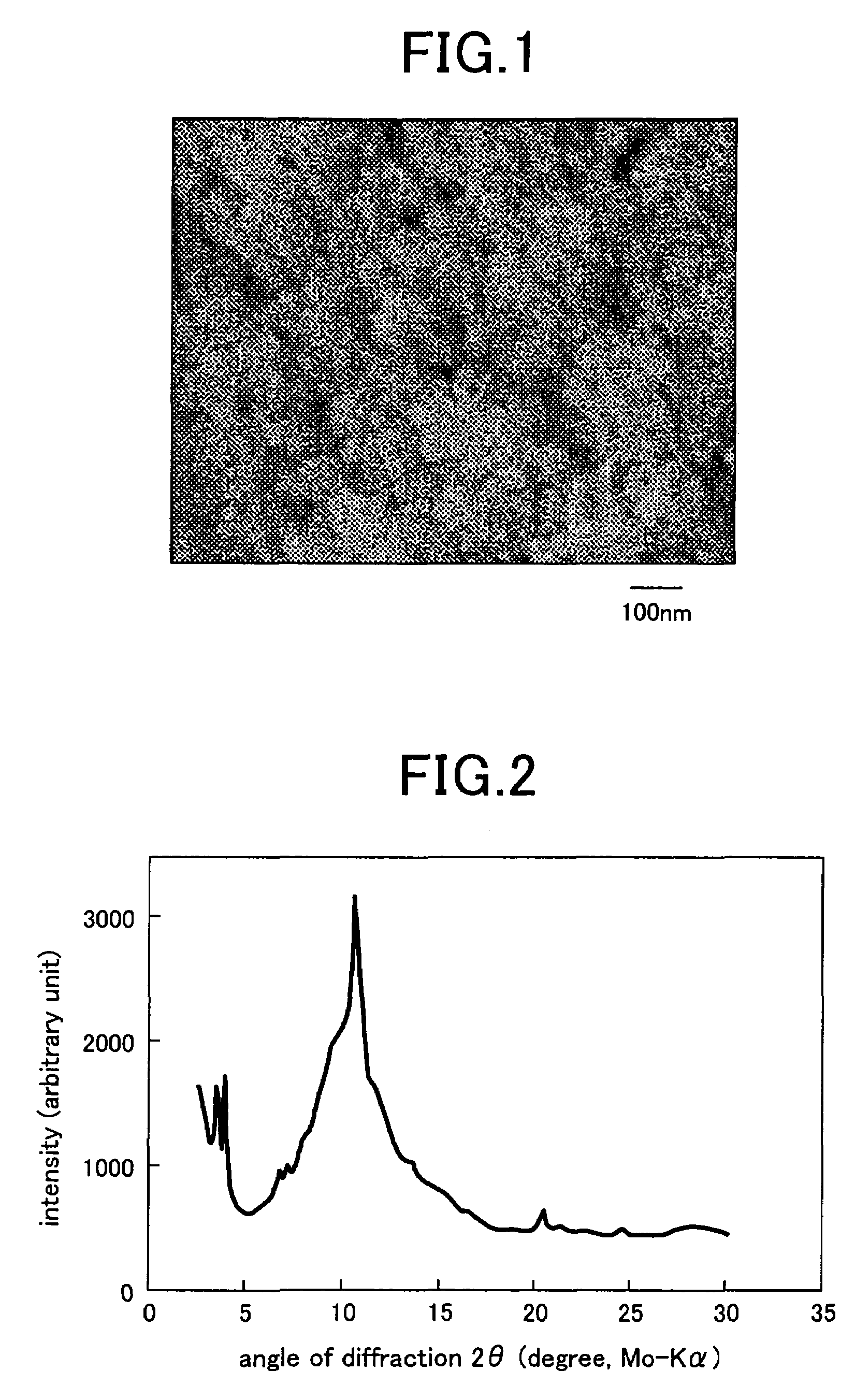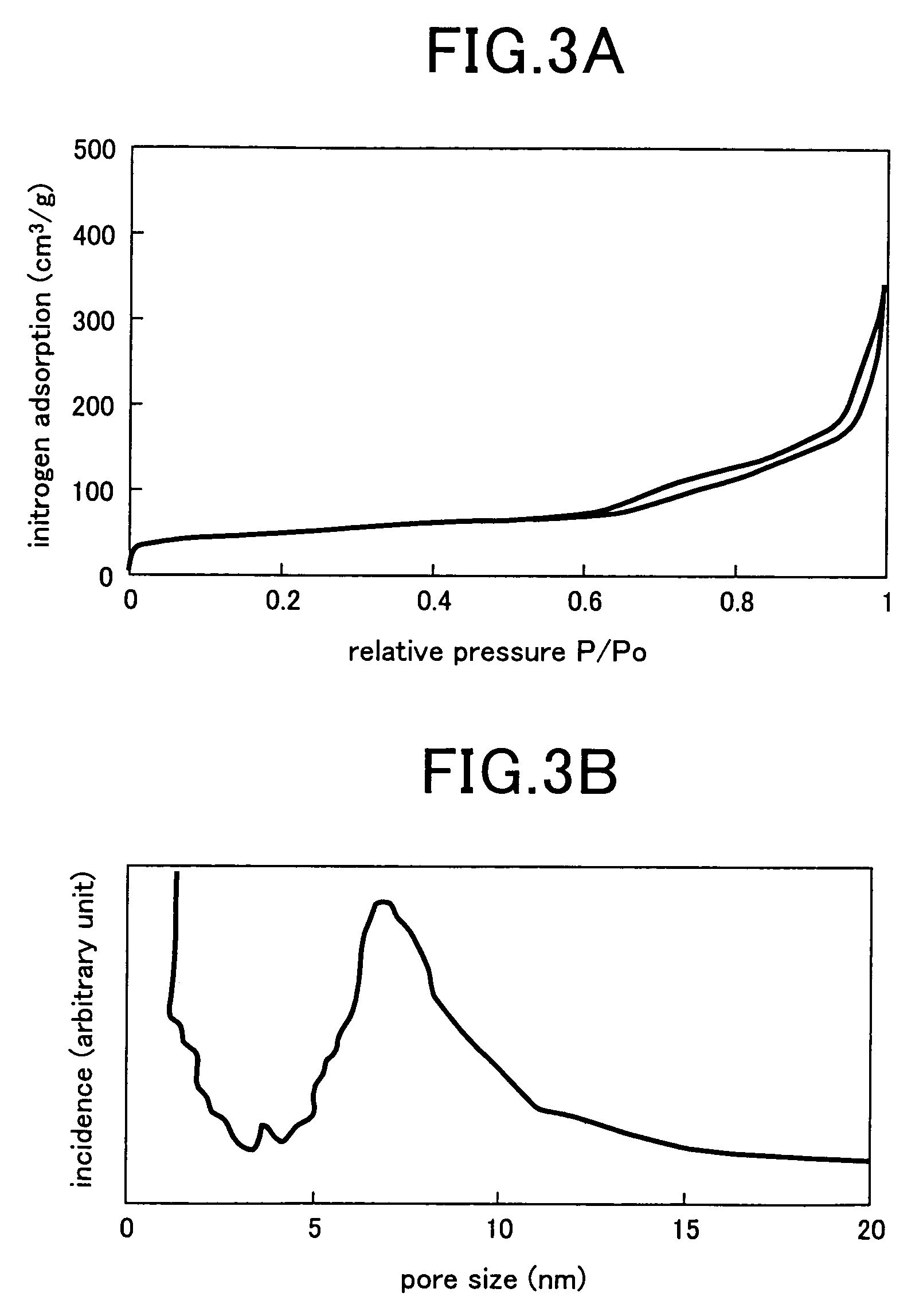Synthesis of mesoporous zeolite
a technology of mesoporous zeolite and zeolite, which is applied in the field of mesoporous zeolite synthesis, can solve the problems of affecting the synthesis process, so as to achieve good crystallinity and large specific surface area
- Summary
- Abstract
- Description
- Claims
- Application Information
AI Technical Summary
Benefits of technology
Problems solved by technology
Method used
Image
Examples
example
[0025]An aqueous solution (25 ml) was prepared by adding 0.0265 g (0.01 M) of Na2CO3, 2.7528 g (1 M) of resorcinol, 4.058 liters (2 M) of a 37% formaldehyde solution to deionized water. The aqueous solution was poured in a glass vessel, held as such at a room temperature for 24 hours, warmed at 60° C. for 24 hours and further warmed at 80° C. for 48 hours. Dark brown gel was formed in the aqueous solution by the heat-treatment. The gel was poured in a 0.125% trifluoroacetate solution, held as such at a room temperature for 24 hours, and then washed with acetone to extract water from pores of the gel. Thereafter, the gel was received in an autoclave and dried in a supercritical carbon dioxide atmosphere at a temperature higher than a critical temperature under application of a pressure for substitution of acetone with CO2. Finally, the temperature and the pressure were lowered for extrusion of CO2, and the supercritical carbon dioxide atmosphere was replaced by nitrogen to carbonize ...
PUM
| Property | Measurement | Unit |
|---|---|---|
| size | aaaaa | aaaaa |
| size | aaaaa | aaaaa |
| size | aaaaa | aaaaa |
Abstract
Description
Claims
Application Information
 Login to View More
Login to View More - R&D
- Intellectual Property
- Life Sciences
- Materials
- Tech Scout
- Unparalleled Data Quality
- Higher Quality Content
- 60% Fewer Hallucinations
Browse by: Latest US Patents, China's latest patents, Technical Efficacy Thesaurus, Application Domain, Technology Topic, Popular Technical Reports.
© 2025 PatSnap. All rights reserved.Legal|Privacy policy|Modern Slavery Act Transparency Statement|Sitemap|About US| Contact US: help@patsnap.com


